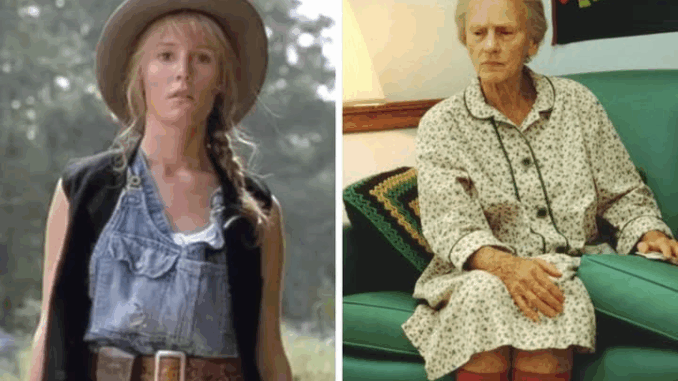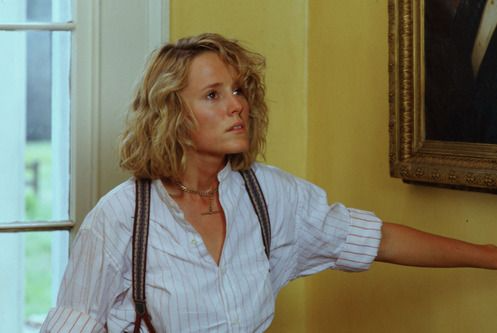
If you’ve watched Fried Green Tomatoes once, twice, maybe ten times, you might still be scratching your head at the end. That final scene. The honey jar. The winking smile. The implication that Ninny Threadgoode might actually be Imogene “Idgie” Threadgoode all grown-up. But is it true? In this article, I’ll walk you through the evidence, dissect the ending, compare book vs film, and help you decide once and for all. Let’s go.
Setting the Scene: What the Movie Gives Us
In the movie’s present day, Evelyn Couch befriends the kindly Ninny at a nursing home. Ninny recounts stories of the old town of Whistle Stop, Alabama, about Idgie and her friend Ruth Jamison. The flashbacks dominate most of the film, but the wrap-up brings us back to Ninny and her place in the world. We see the grave of Ruth, a jar of honey and a note that reads “I’ll always love you, the Bee Charmer.” Ninny smiles knowingly. We lean in. We wonder: Is Ninny the Bee Charmer? Is Ninny Idgie?
The Clues That Suggest Ninny Is Idgie
There are several moments in the film that seem to hint strongly at this possibility:
-
The appearance of the honey jar and the note by Ruth’s grave. “Bee Charmer” is Idgie’s nickname.
-
Ninny’s story includes very intimate details about Idgie’s life, as though she was Idgie or so close she knew everything.
-
The final smile Ninny gives Evelyn feels loaded—almost like a confession.
-
The movie’s script appears to blur timelines and allow for this convergence of identity.
The Case That They Are Not the Same Person
But hold on—there’s just as strong an argument that Ninny and Idgie are not the same:
-
At the film’s beginning, Ninny herself says she married Idgie’s brother, Cleo Threadgoode, which would make her Idgie’s sister-in-law.
-
Ninny states she once had a crush on Buddy, Idgie’s brother — if Ninny was Idgie that becomes weird.
-
In the flashbacks, we never see Ninny as a young woman participating — no younger Ninny in those scenes.
-
The novel on which the film is based makes clear that Ninny and Idgie are distinct characters.
Divergence Between Book and Film
In the novel Fried Green Tomatoes at the Whistle Stop Café by Fannie Flagg, the identities are separated explicitly: Idgie is one character, Ninny another. The film chooses ambiguity. That means when you watch the movie you’re stepping into what I’d call a semi-mystery. The director leaves the door open.

Why Ambiguity Works (and Why It Frustrates)
Ambiguity in film can be like a spice—if you use it well, it adds depth; if you overuse it, you leave your audience hungry. Here, the film uses it to let viewers decide: Did Ninny live Idgie’s story in her older years? Or is she simply the storyteller who carries the torch? Some love it because it invites speculation. Others hate it because they want closure.
Analyzing the Timeline: Does It Add Up?
One of the major tests of any identity theory is whether the timeline works. Let’s ask: If Ninny is Idgie, does the age and story sequence make sense?
-
Flashbacks take place in the 1920s-30s, Idgie is young. Ninny in the present day appears as an elderly woman in the 1980s. Time-wise it could work.
-
But Ninny says she married Idgie’s brother, had her own life path — that complicates ‘same person’ theory.
-
The absence of younger Ninny in flashbacks suggests she wasn’t present for major events — which would be odd if she was Idgie.
Symbolism of the Jar of Honey and the Note
That jar of honey and note = powerful cinematic shorthand. Honey = the bee charmer → Idgie’s nickname. The note: “I’ll always love you.” It’s a sign. A wink. A suggestion of continuity. If you believe Ninny is Idgie, the honey becomes her token of identity. If you believe they’re different, it becomes a meaningful tribute.
What the Screenwriter Could Be Saying
The screenwriter almost certainly left this ambiguous on purpose. They knew the novel laid it out clearly, but chose film to invite interpretation. They gave you evidence not confirmation. This is smart because it keeps conversation alive. It’s the kind of ending that makes fans stay up late wondering.
How Fans Interpret It (and Why It Matters)
Fans are split. Some hold the “Ninny is Idgie” theory passionately. Others accept that the movie simply suggests it, without confirming. On forum after forum:
“The film is deliberately ambiguous, but the book is clear.”
“I always thought Ninny WAS Idgie, then realized when I got older it doesn’t match the backstory.”
These debates matter because they show how narrative choices influence emotional impact.
What It Means for the Characters
If Ninny is Idgie: The story becomes one of survival and reinvention — Idgie lives a full life, takes on a new identity, and ultimately becomes the narrator of her own legend.
If Ninny is not Idgie: The story becomes one of legacy, memory, and testimony — Ruth and Idgie’s story is passed on by a sibling-in-law who witnessed it all and now preserves it.
Why This Question Still Captivates Audiences
Because it touches on themes we all care about: identity, story ownership, memory, legacy. The idea that you might change, reappear under a new name, tell your own legend — it’s powerful. The film doesn’t give you an easy answer, which is why even decades later we still ask: Was Ninny really Idgie?
How to Decide for Yourself
Here’s a fun exercise: Watch the final scene. Pause at Ninny’s smile. Think about the honey jar. Then ask: “Does this feel like a woman revealing herself, or simply remembering someone?” Then go back and ask yourself whether the clues line up with the earlier narrative. You’ll pick a side. That’s how you fall into the theory.
Final Thoughts on the Ending
Whether you believe Ninny is Idgie or not, the film gives you something richer: the idea that stories transcend identity, that love and friendship endure, that legends grow. The ending works because it doesn’t tie everything up. It leaves room. Room for mystery. Room for interpretation. And that’s why we’re still talking about it.
Conclusion
In the end, the mystery at the heart of Fried Green Tomatoes isn’t just about whether Ninny equals Idgie—it’s about how we interpret identity, storytelling, and memory. The evidence leans one way and then the other. The novel draws boundaries, the film blurs them. And that’s the beauty. So yes, maybe Ninny is Idgie. Or maybe she isn’t. What matters more is that you believe what feels right to you.
FAQs
Q1: Does the movie explicitly confirm Ninny is Idgie?
A1: No — the film gives strong hints, but never outright states that Ninny and Idgie are the same person. The book, however, makes them distinct.
Q2: Why did the filmmakers choose ambiguity on this point?
A2: Likely to maintain mystery, invite viewer engagement, and perhaps to soften the novel’s more direct elements for a wider 1990s audience.
Q3: What clues suggest they are the same person?
A3: The jar of honey and note on Ruth’s grave with the “Bee Charmer” nickname, Ninny’s intimate knowledge of Idgie’s life, and the final knowing look toward Evelyn.
Q4: What clues suggest they are different people?
A4: Ninny’s own statements about marrying Idgie’s brother, her crush on Idgie’s brother, absence of younger Ninny in flashbacks, and the novel’s clear separation of characters.
Q5: How should I interpret the ending for myself?
A5: Watch with an open mind. Ask whether the evidence feels like a reveal or tribute. Decide which version gives you the emotional payoff you prefer—and let that be your interpretation.
